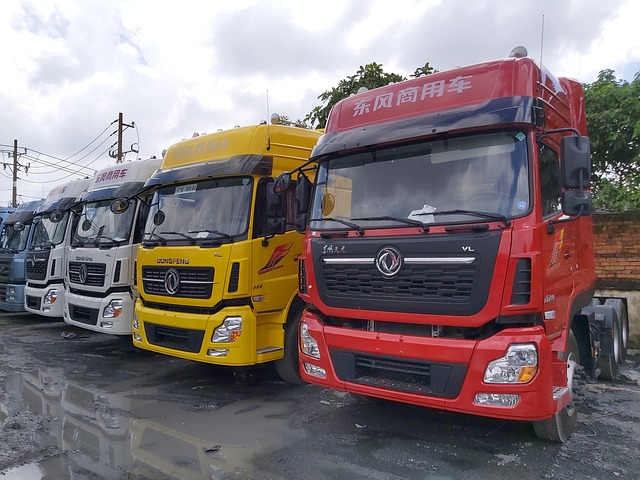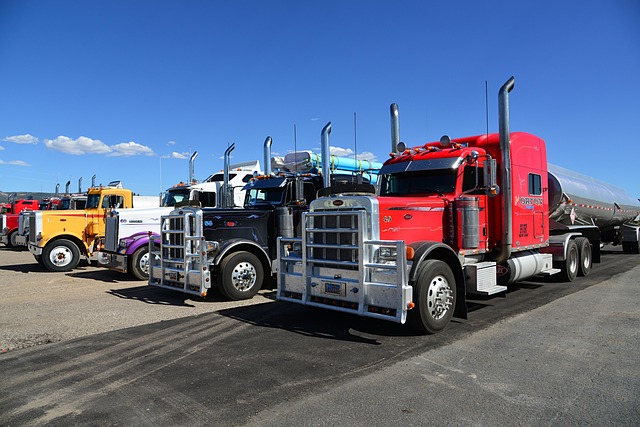Looking to register your car in California? This comprehensive guide breaks down the process step-by-step, ensuring a smooth experience. From understanding the requirements to submitting applications and fees at the DMV, we cover it all. A key part of the process is VIN verification, so be prepared to provide the unique number for a successful registration. Follow our straightforward instructions to finalize your California car registration without hassle.
- Understanding the California Vehicle Registration Process
- Gathering Necessary Documents for VIN Verification
- Conducting a Vehicle Identification Number (VIN) Check
- Submitting Applications and Fees to the DMV
- Finalizing Your Car Registration in California
Understanding the California Vehicle Registration Process

In California, registering a car involves a straightforward process that begins with several essential steps. The first crucial step is to gather all necessary documents and ensure your vehicle meets state requirements. This includes proof of ownership, typically through a bill of sale or previous registration, along with valid identification for both you and the vehicle’s owner if different. Once these foundational elements are in place, the process focuses on verifying the vehicle’s identity, which is where the Vehicle Identification Number (VIN) comes into play. The VIN serves as a unique fingerprint for your car, making it essential for tracking and registration. In California, this verification often involves submitting your vehicle’s VIN to official databases for cross-referencing with state records, ensuring accuracy and security.
After successful VIN verification in California, the next step is to visit a designated registry agency or DMV office. Here, you’ll complete application forms and pay the required registration fees. The fee structure varies based on factors like vehicle age, type, and fuel efficiency. Interestingly, California also offers the option of registering your car online for added convenience. However, some might prefer the personalized assistance available at physical locations. To streamline the process further, many people opt for mobile VIN verification services that can conduct inspections remotely, saving time and effort. These mobile vin verifiers ensure a seamless transition into California’s registered vehicle ranks.
Gathering Necessary Documents for VIN Verification

Before heading to the California Department of Motor Vehicles (DMV) or an authorized agent, ensure you have all the required documents for a smooth VIN verification process. The Vehicle Identification Number (VIN) is a unique code that identifies your car, and accurate information is crucial during registration. Gather your vehicle’s title, which includes the VIN, along with valid forms of identification such as a driver’s license or state ID card. If you’re transferring ownership, proof of purchase and any previous registration documents are essential.
Additionally, for a swift mobile vin verification or vin inspection, have your vehicle’s registration papers handy. Some services even allow you to provide your VIN via text or email, making it easier to confirm the details before visiting the DMV. Remember, accurate documentation saves time and effort during the car registration process in California.
Conducting a Vehicle Identification Number (VIN) Check

Before registering your car in California, conducting a Vehicle Identification Number (VIN) check is a crucial step. This process involves verifying the VIN data to ensure it matches the vehicle’s make, model, and year, as well as checking for any outstanding issues or recalls. A mobile vin inspection service can facilitate this by providing on-site VIN verification, allowing you to confirm your car’s authenticity before initiating the registration process.
California offers various methods for performing a VIN check, including online platforms and local vehicle licensing agencies. However, using a mobile vin verifier can be especially convenient, as it sends detailed reports instantly, helping to streamline the registration experience. This is particularly beneficial when dealing with older vehicles or those with complex ownership histories, ensuring that all necessary information is accurate and up-to-date for a seamless car registration process.
Submitting Applications and Fees to the DMV

To register your car in California, the first step is to gather all necessary documents and applications. This includes proof of ownership, a completed Application for Title and Registration (DMV Form 7001), and the appropriate fees. The Department of Motor Vehicles (DMV) requires a Vehicle Identification Number (VIN) verification as part of this process, ensuring the accuracy of your vehicle’s details. You can conduct this crucial step through a mobile VIN verification or inspection service, making it more convenient for you to complete your registration.
Once your documents are ready, submit them along with the required fees to your local DMV office. The staff will verify your information, including the VIN, and process your application. This may involve additional inspections or documentation, depending on your vehicle’s age and condition. It’s essential to ensure all details are accurate to avoid delays in the registration process.
Finalizing Your Car Registration in California

After you’ve gathered all necessary documents and passed the smog test (or provided proof of exemption), it’s time to finalize your car registration in California. The next step is to conduct a Vehicle Identification Number (VIN) verification, which ensures the authenticity of your vehicle’s details. This process can be done through various official channels, including a mobile VIN verifier or by visiting a local DMV office. A mobile VIN inspection offers convenience and speed, allowing you to complete this requirement on your own schedule. Alternatively, you can opt for traditional methods by bringing your vehicle to a designated DMV center where they’ll verify the VIN against state records.
Once your VIN is successfully verified, you can proceed with the registration process, which includes submitting all required forms, paying the registration fee, and ensuring your insurance is up to date. With these final steps complete, your car will be officially registered in California, enabling you to hit the road legally and enjoy your newly registered vehicle.
Registering a car in California involves several straightforward steps, from understanding the vehicle registration process to conducting a crucial VIN verification. Ensure you have all necessary documents ready for a smooth experience. After completing the application and fees submission, you’re just a step away from finalizing your car’s registration, enabling you to legally hit the California roads.
